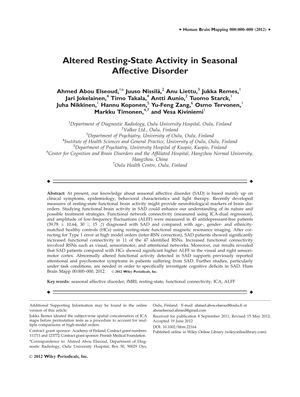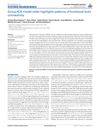Altered Resting-State Activity in Seasonal Affective Disorder
September 2012
in “
Human Brain Mapping
”

TLDR People with Seasonal Affective Disorder have different brain activity in certain areas when resting.
The study investigated functional brain activity in 45 patients with Seasonal Affective Disorder (SAD) using resting-state fMRI and compared it with that of matched healthy controls. It found that SAD patients had significantly increased functional connectivity in 11 out of 47 resting-state networks, particularly in visual, sensorimotor, and attentional networks, and higher ALFF in the visual and right sensorimotor cortex. These results suggest that altered functional activity in these areas could be a neurobiological marker for SAD. However, no significant reductions in connectivity or ALFF were observed, and no correlation was found between these measures and depression severity as per the Hamilton Depression Rating Scale. The study highlights the need for further research to explore cognitive deficits in SAD under task conditions.
